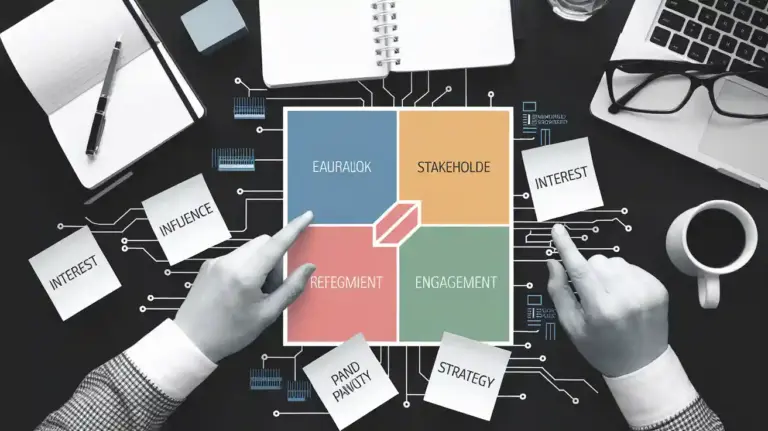Are you in the process of making changes within your organization? Whether it’s a new software implementation or a company-wide restructuring, change can bring about uncertainty and risk. It’s important to identify and mitigate these risks to ensure a smooth transition and minimize potential negative impacts.
Effective risk management is essential for any successful change process. By conducting a thorough risk assessment, developing a mitigation strategy, and implementing and monitoring risk controls, you can identify potential issues before they become major problems.
In this article, we will provide you with a step-by-step guide on how to identify and mitigate risks during the change process. By following these guidelines, you can ensure that your change process is successful and your organization can thrive in the long run.
Understanding the Importance of Risk Management
You gotta know that managing risk is crucial when making any changes. As you move forward with a change process, there are a lot of uncertainties and potential pitfalls that could arise. That’s where risk identification comes in.
By analyzing the potential risks associated with the change, you can better prepare for them and minimize their impact on the project. Once you’ve identified the potential risks, it’s important to develop risk mitigation techniques.
This means coming up with a plan to reduce the likelihood or impact of each potential risk. For example, if you’re implementing new software, you might identify the risk that the system could crash during the implementation process. A mitigation technique for this risk might be to conduct thorough testing before rolling out the new software to ensure it’s stable.
Effective risk management requires ongoing attention throughout the change process. You can’t just identify the risks and develop mitigation techniques at the beginning of the project and call it good. You need to consistently monitor and reassess the risks as the project progresses.
This will allow you to adjust your mitigation techniques as needed and ensure that you’re always prepared for any potential risks that may arise.
Conducting a Risk Assessment
Now that you’ve gathered all necessary information, it’s time to assess potential hazards and determine the likelihood of negative outcomes. Conducting a risk assessment is crucial in identifying common risks and minimizing their impact on your change process. Here are a few tips to help you conduct a successful risk assessment:
- Use risk assessment tools: There are various tools available to assess risks, such as SWOT analysis, PEST analysis, and FMEA. These tools help you identify the strengths, weaknesses, opportunities, and threats of your change process. They also help you identify potential risks and develop strategies to mitigate them.
- Involve stakeholders: Your stakeholders have valuable insights that can help you identify potential risks. Involve them in the risk assessment process to gain a better understanding of the potential challenges and their impact on the change process. This will also help you gain their support for the change.
- Prioritize risks: Not all risks are equal in terms of their impact on the change process. Prioritize the risks based on their likelihood and severity. This will help you focus on the most critical risks and develop strategies to mitigate them.
By conducting a risk assessment, you can identify potential hazards and develop strategies to mitigate them. This will help you minimize the impact on your change process and ensure its success. Remember, risk management is an ongoing process, and you should regularly review and update your risk assessment to ensure its effectiveness.
Developing a Mitigation Strategy
In the current section, we’ll be developing a plan to minimize the negative impact of potential hazards on our change goals. Change management is not just about identifying risks but also about developing a mitigation strategy to respond to them. This is where risk response comes in. Risk response involves developing a plan to mitigate the impact of risks on the change process.
To develop a mitigation strategy for potential hazards, it is important to understand the different types of risks that might occur during the change process. You can do this by conducting a thorough risk assessment, which we have discussed in the previous subtopic. Once you have identified the different types of risks, you can then begin to develop a mitigation strategy that addresses each risk.
A useful way to develop a mitigation strategy is to use a table that outlines each risk, its potential impact, and the actions that can be taken to mitigate it. This table can be used as a reference throughout the change process to ensure that all risks are being addressed. By taking a proactive approach to risk management, you can ensure that your change process is successful and that any potential hazards are minimized.
Implementing and Monitoring Risk Controls
We’ll now focus on putting our plan into action to ensure that any potential issues are kept in check. After developing a mitigation strategy, it’s crucial to implement and monitor risk controls to ensure their effectiveness.
Implementing risk controls means applying the plans and actions outlined in the mitigation strategy. This includes assigning tasks to team members, creating a timeline for completion, and ensuring that everyone is aware of their responsibilities.
Continuous monitoring is essential to ensure that risk controls are effective. It involves regularly checking whether the risk controls are working as intended and if any new risks have emerged. Monitoring can be done through regular meetings with team members, reviewing progress reports, and conducting risk assessments.
Monitoring can also help identify areas for improvement in the risk controls and provide an opportunity to adjust the mitigation strategy if necessary.
In summary, implementing and monitoring risk controls is crucial in identifying and mitigating potential risks during the change process. By putting the mitigation strategy into action and continuously monitoring the effectiveness of risk controls, organizations can reduce the likelihood of issues arising. This approach ensures that the organization is well-prepared to handle any unforeseen challenges that may arise during the change process.
Creating a Contingency Plan for Unforeseen Circumstances
Preparing for the unexpected is like having a safety net – it’s important to have a contingency plan in place to handle any unforeseen circumstances that may arise during the implementation of the risk controls.
Contingency planning involves identifying potential risks and developing risk response strategies to mitigate them. This process helps to ensure that the project stays on track and that any unexpected events are handled effectively.
A contingency plan should include a detailed description of potential risks and how they will be addressed. This plan should also identify the key stakeholders who will be responsible for executing the plan and specify the timeline for implementation.
In addition, the contingency plan should outline the communication strategy for informing all stakeholders of the unforeseen circumstances and the actions that will be taken to address them.
In summary, creating a contingency plan is an essential part of managing risks during the change process. It helps to ensure that the project stays on track and that any unforeseen circumstances are handled effectively. By identifying potential risks and developing risk response strategies, you can mitigate the impact of unexpected events and ensure the success of your project.
How Can Effective Change Communication Mitigate Risks During the Change Process?
Effective change communication planning insights can help mitigate risks during the change process by keeping all stakeholders informed and engaged. Clear and timely communication can address concerns, manage expectations, and foster support for the change. By providing relevant information, addressing potential resistance, and ensuring transparency, communication planning insights can help minimize disruptions and maximize successful change implementation.
Conclusion
In conclusion, managing risks during the change process is a critical task that requires your utmost attention. By conducting a thorough risk assessment, you can identify potential risks and develop a mitigation strategy that will help reduce the likelihood of these risks occurring.
This will ensure that your change process runs smoothly and efficiently, with minimal disruption to your organization. However, it’s important to remember that risks are an inevitable part of any change process, and it’s impossible to eliminate them entirely.
Therefore, it’s essential to implement and monitor risk controls, and to create a contingency plan for unforeseen circumstances. As the saying goes, “expect the best, but prepare for the worst.” By taking a proactive approach to risk management, you can minimize the impact of any unforeseen events and ensure that your change process is successful.





